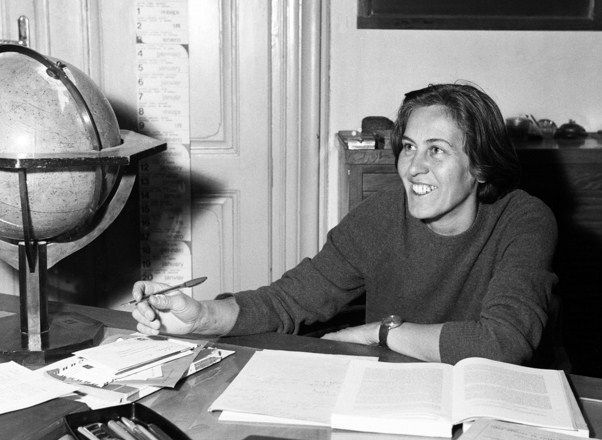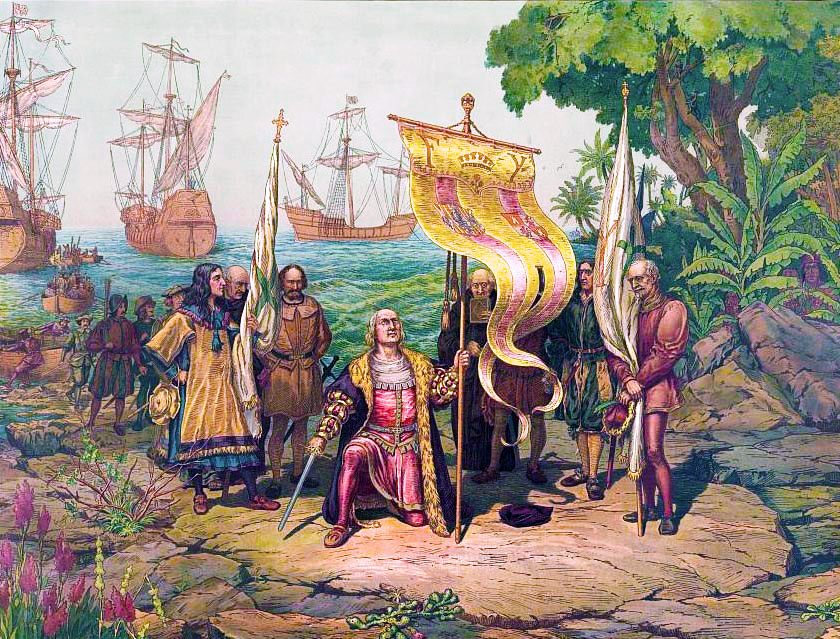During Women’s History Month we honor all Italian and Italian American women for the richness they added to thousands of communities across Italy and our country and for the love and lessons they passed down to the generations that came after them. For the entire month of March we will feature a selection of women who left their mark on society in a variety of fields.
Sister Rosa Blandina Segale (1850 – 1941)
The Nun Who Conquered the West
Sister Blandina was born in Cicagna, Italy, a small mountain village near Genoa. She came to the United States from revolution-torn Italy as a small child when her family left to escape persecution. An adventurous young lady, she later became one of the Sisters of Charity and joined their missionaries. In 1872, at the age of 22, Sister Blandina traveled to the west where she would work for the next 21 years. She arrived in New Mexico in 1877 and immediately began work to build a three-story hospital. The result was St. Vincent Hospital, the first hospital built in the New Mexico Territory.
In 1881, Sister Blandina began construction on a school in Albuquerque. Our Lady of Angels opened in September of 1881 and was the first public school in New Mexico. In 1889, the Jesuits offered the Sisters of Charity land upon which Mt. St. Joseph Sanatorium was built. The “San” opened its doors to all who needed care in 1902. As the population of Albuquerque grew, the Sisters of Charity expanded their ability to meet the needs of the growing community. The Sisters of Charity opened the first nursing school, the first schools for X-ray and laboratory technicians and the first blood bank in New Mexico. Sister Blandina’s work in the area, as well as her run-ins with Billy the Kid, garnered her the name, “The Nun Who Conquered the Wild West.” In 1966, her bravery was the subject of an episode of the television show Death Valley Days entitled “The Fastest Nun in the West.”
After her years of missionary work, in 1893, Sister Blandina wrote her memoir “At the End of the Santa Fe Trail.” It was the first published book by an Italian American woman. The good works of Sister Blandina continued through the years and by 1983, the St. Joseph Healthcare System consisted of three acute-care hospitals and a rehabilitation hospital. She passed away in 1941, just one month after celebrating her 91st birthday. In 2015, the process for her canonization as a saint was approved by the Vatican and Sister Blandina is now referred to by the Church as a Servant of God.
Teresa Cafarelli de Francisci (May 4, 1898 – October 20, 1990)
“Miss Liberty” Model
De Francisci was born Mary Teresa Cafarelli in a town south of Naples, Italy. When she was four years old, she and her mother immigrated to the United States. She was raised in Clinton, Massachusetts, graduating from Clinton High School in 1918, becoming the first person of Italian descent to graduate the school.
In 1920, Teresa married Anthony de Francisci. The following year, the United States Commission of Fine Arts held a contest in order to determine who would design the new silver dollar that was to be issued as a commemorative of peace. The coin was slated to go into production later that year. Eight artists were invited to display their works; de Francisci’s husband was one of them. Since the production process needed to move very quickly, de Francisci didn’t have time to find a professional model to sit for his sculpture of Lady Liberty, so he decided to ask his wife, Teresa, to act as the model instead. In describing his technique he stated, “I opened a window of my studio and let the wind blow on her hair while she was posing for me.” After deliberation, de Francisci’s design was eventually chosen. As winner of the contest, he was awarded $1,500.
The Peace Dollar was supposed to mark the return of peace after World War I and officially went into production on December 29, 1921. The coin was minted from 1921 to 1928 and again in 1934 and 1935. In her later life, she was a frequent invited guest at coin collecting events. Teresa died in 1990 at the age of 92.
Adriana Caselotti (May 6, 1916 – January 19, 1997)
The Voice of Snow White
Adriana Caselotti was a daughter of Italian immigrants who settled in Connecticut. Her father was a teacher of music and a vocal coach while her mother was a singer in the Royal Opera. When Caselotti was seven, they left Connecticut for Italy while her mother toured with an opera company. Caselotti was educated at San Getulio Italian convent near Rome, while her mother performed in the opera. When they returned to New York three years later, Caselotti spoke no English. While re-learning the language, she studied singing with her father.
After spending some time as a chorus girl at MGM Studios, Caselotti received her big break in 1936 when she was hired by Walt Disney to be the voice of his heroine Snow White in the classic, “Snow White and the Seven Dwarves.” Blessed with a delicate but unusually clear and high voice, the 21 year old soprano beat out 148 other candidates for the role. She was paid a total of $970 for working on the film.
Since Adriana was under studio contract from Disney, she was prevented from appearing in film and other media following Snow White. The only other work Caselotti did following her premiere was an un-credited role in “The Wizard of Oz” as the voice of Juliet during the Tin-Man’s song, “If I Only Had a Heart,” singing the falsetto line. Caselotti did, however, do several promotional spots for Snow White, signing memorabilia. On Thanksgiving Day in 1972, she guest-starred on an episode of “The Julie Andrews Hour” saluting the music of Walt Disney singing “I’m Wishing” and “Someday My Prince Will Come” with Julie Andrews.
She sold autographs and also made an attempt at an opera career. In 1987, she began making public appearances for Disney to promote the 50th anniversary of Snow White. Adriana was honored by Disney Studios in 1994 when she received a Disney Legend Award and left her handprints in cement outside the Studio Theater. She died in 1997 at the age of 80.
Margherita Hack (June 12, 1922 – June 29, 2013)
Astrophysicist and Science Writer
Born in Florence, Italy, Margherita Hack received her laurea in Physics from the University of Florence in 1945, with a thesis in Astrophysics on Cepheid variables. She was full Professor of Astronomy from 1964 to 1997 at the University of Trieste before retiring in 1998.
Known as the “Lady of the Stars,” Margherita contributed in the fields of stellar spectroscopy and radio astronomy and the asteroid 8558 Hack is named after her. The author of more than 200 scientific papers, in 1964 she became director of the Trieste Observatory and held the position until 1987. She was the first woman to hold such a position in Italy.
Hack is known as “one of the brightest minds in the Italian scientific community.” Along with publishing many original papers on international scientific journals, she is the author of numerous books and has received global recognition and awards for her scientific dissemination activities. The asteroid 8558 Hack discovered in 1995, was named in her honor. She had a gift for explaining complex scientific concepts to the layman and as well as writing popular science books, she became a familiar figure on Italian television.
She was a member of several Physics and Astronomy associations as well as director of the Astronomy Department at the University of Trieste from 1985 to 1991 and from 1994 to 1997. She passed away at the age of 91 in Trieste.





